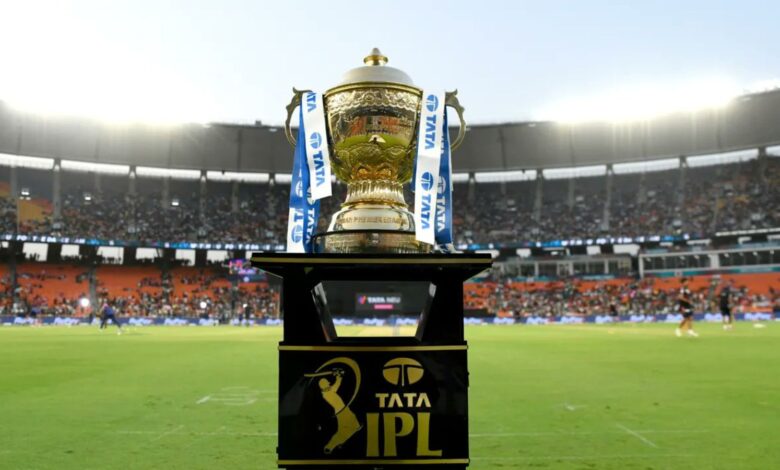The impact of IPL on the careers of cricket biomechanists

The IPL, with its fast-paced format and relentless schedule, has served as a crucible for innovation in cricket biomechanics. The condensed nature of the tournament places immense physical demands on players, necessitating a nuanced understanding of biomechanical factors to maintain peak performance throughout the season. Biomechanists play a pivotal role in this regard, collaborating closely with players, coaches, and support staff to fine-tune techniques, rectify mechanical inefficiencies, and devise personalized training regimens tailored to individual needs.
One of the most significant contributions of the IPL to cricket biomechanics lies in its elevation of data-driven decision-making. With an abundance of statistical insights at their disposal, biomechanists leverage sophisticated analytics to identify patterns, detect anomalies, and optimize strategies for player development. Advanced metrics such as release angles, bat swing speeds, and joint kinematics offer invaluable insights into the biomechanical underpinnings of elite performance, empowering teams to make informed decisions regarding player selection, technique refinement, and workload management.
Moreover, the IPL has spurred an unprecedented emphasis on injury prevention and rehabilitation within cricketing circles. Biomechanical assessments conducted pre-season and throughout the tournament enable early detection of potential injury risks, allowing proactive interventions to mitigate these threats. By analyzing biomechanical data alongside physiological parameters and workload metrics, biomechanists can devise comprehensive injury prevention protocols tailored to the unique demands of the IPL environment.
Beyond the confines of the IPL, the influence of cricket biomechanics extends to grassroots development and talent identification, fostering a culture of scientific inquiry and innovation across all levels of the game. The 2024 IPL points table reflects the intense battles waged on the field, showcasing the performance of teams vying for supremacy in the tournament. Aspiring cricketers now have access to state-of-the-art biomechanical facilities and expertise, enabling them to refine their skills with unprecedented precision and efficiency.
Pre-IPL Era: Limited Opportunities and Scope
Prior to the IPL, the field of cricket biomechanics existed but lacked widespread recognition and career opportunities. Biomechanical assessments were primarily conducted in academic or research settings, with limited application to professional cricket. Cricketers primarily relied on traditional coaching methods and personal experience to improve their technique and prevent injuries.
The IPL Boom: A Surge in Demand for Biomechanics Expertise
The IPL’s arrival marked a turning point for cricket biomechanics. Franchise owners, recognizing the value of player fitness and performance, began investing in cutting-edge technologies and personnel. Biomechanists were brought on board to analyze players’ movements, identify potential injury risks, and suggest corrective measures. The Top 10 youngest players to debut in IPL 2024 epitomized the league’s commitment to nurturing emerging talent and providing opportunities for the next generation of cricketers to shine. This sudden surge in demand for their expertise opened up a plethora of career opportunities for biomechanists in the professional cricketing world.
Impact on Biomechanics as a Profession:
- Increased Visibility and Recognition: The IPL’s global reach and media attention shone a spotlight on the field of cricket biomechanics, bringing it to the forefront of the cricketing world. This newfound recognition has attracted young talent to the field, fostering its growth and development.
- Enhanced Research and Development: The demand for evidence-based practices within the IPL has spurred research and development in cricket biomechanics. Biomechanists are actively involved in conducting research on player movements, injury prevention strategies, and the effectiveness of training methods. This continuous pursuit of knowledge is advancing the field and improving player well-being.
- Technological Advancements: The IPL has driven the adoption of sophisticated technological tools in biomechanics. Motion capture systems, force platforms, and other advanced equipment are now commonplace, enabling biomechanists to conduct more precise and in-depth analyses of player movements.
Impact on Biomechanists’ Careers:
- Specialization and Diversification: The IPL has opened doors for biomechanists to specialize in various areas, such as bowling action analysis, batting technique assessment, and injury rehabilitation. In the quest to determine the greatest of all time in the IPL, or the GOAT of IPL: Who is the GOAT of IPL? 2024, the influence of biomechanical insights cannot be understated. This specialization allows them to develop deeper expertise and cater to the specific needs of different player roles.
- Improved Job Prospects and Salaries: The increased demand for biomechanists due to the IPL has led to improved job prospects and competitive salaries within the field. This has made cricket biomechanics a more attractive career option for qualified professionals.
- Global Exposure and Networking Opportunities: Working with international players and franchises in the IPL provides biomechanists with invaluable global exposure and networking opportunities. This can lead to collaborations with other professionals, participation in international conferences, and career advancements beyond the IPL.
Challenges and Considerations:
- Pressure and Performance Expectations: Working in a high-pressure environment like the IPL can be demanding for biomechanists. They are expected to deliver quick and effective solutions to complex player-specific issues, while maintaining confidentiality and navigating player egos.
- Ethical Considerations: The IPL’s emphasis on performance can sometimes lead to ethical dilemmas for biomechanists. They must ensure their recommendations prioritize player well-being and avoid pressuring players to adopt techniques that could compromise their long-term health.
- Continuous Learning and Skill Development: The field of biomechanics is constantly evolving, and biomechanists working in the IPL need to keep pace with the latest advancements in technology, research, and best practices. Continuous learning and skill development are essential for maintaining their credibility and effectiveness in this dynamic environment.
Conclusion:
The IPL has undeniably played a transformative role in the field of cricket biomechanics. It has increased the visibility and recognition of the profession, driven advancements in research and technology, and opened up exciting career opportunities for biomechanists. While there are challenges associated with working in this high-pressure environment, the IPL’s impact on the field of cricket biomechanics has been overwhelmingly positive, paving the way for a future where these specialists play an even more crucial role in optimizing player performance and ensuring their long-term well-being.





